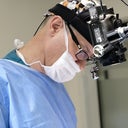Do I have polly beak deformity? Would revision help much? (Photo)
I had a rhinoplasty 1.5 years ago. I’m not entirely happy with result- I had hoped it would improve with time but it looks the same. The nose does look better than it did though and I don’t think I dislike it enough to have surgery again (I will likely get some filler to refine the tip). I was just wondering if I had Pollybeak deformity? Would revision help much?




